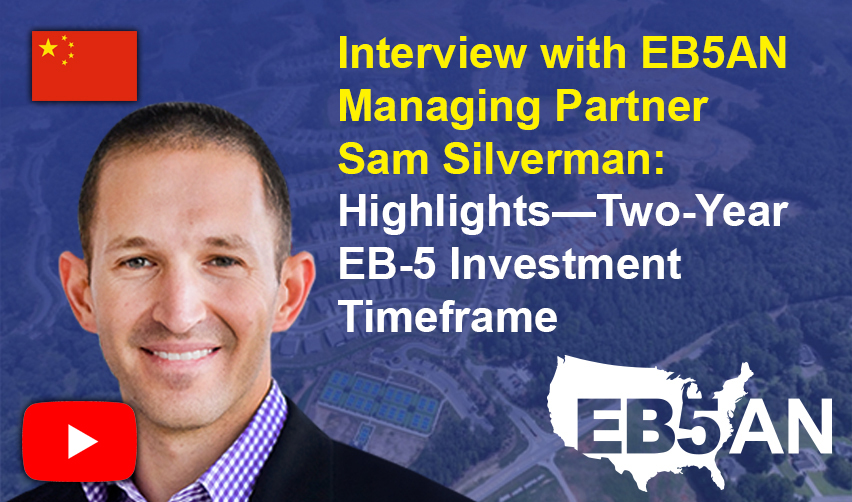Interviewer:
Sounds very good. Already got the jobs. It’s amazing. The next question is the new USCIS memo mentioned. Now, the investors only need to keep their money two to three years in a project, but obviously most of the projects, the companies, they still require the investors to invest around five years. So, is it possible to repay the investors earlier than five years? Or what’s the timeline of you repaying them because that’s their concern to get money back?
Sam:
We’re obviously very familiar with this new policy guidance that came out from USCIS. Personally, we don’t believe that’s going to remain in place. We think it’s going to be reversed in the next 6 to 12 months. Historically, USCIS has published similar guidance in the past that was reversed by U.S. courts, and so we expect that to happen for this guidance as well. But it’s really, even if that does not happen, even if this remains in place, it doesn’t really make a difference, particularly for rural projects. Because in a rural project right now, the earliest you can be repaid is after you’ve held the Green Card for two years.
So, if it takes about one year to get the Green Card, which is what we’re seeing, a lot of rural investors get approval within a year, then it’s one year to get approved. You hold it for two years. Now you’re eligible to be repaid after three years. This policy says you’re eligible to be repaid after just two years. So, it’s a delta. It’s a difference of one year. Okay, now you’re eligible after two years versus before the guidance you’re eligible after about three years.
Sam:
But in either case, the loan term for this project is a five-year loan, right? So yes, you are now eligible under the USCIS rule to be repaid a little bit earlier, but the reality is it’s the later of when USCIS allows you to be repaid versus when the project loan duration allows you to be repaid. So, two to three years doesn’t really matter because the five-year period of the loan is going to be what determines when the money gets back to investors.
Interviewer:
But I guess our investors want to know, even [if] the loan term is five years, if it’s still a possibility if you pay back the loan bit earlier if you sell houses very well or something.
Sam:
The loan term is five years, but Kolter can prepay the loan at any moment.
So, if the project does really well, continues to sell out, and Kolter decides that they sold more homes than expected and they want to repay the loan earlier, then they can, and that just means that EB-5 investors are eligible to get the funds back at an earlier time.
So that absolutely could happen, but our goal is to be as transparent as possible with investors and just make sure that they understand: okay, this is the maximum term of the loan the money could be invested for this period.
Now, it could come back earlier, but we want to make sure that they understand the maximum terms so that there’s no surprises and they understand what it could be. And sure, there’s always the better case scenario.
Sam:
I think the most important thing potential EB-5 investors should understand about this new policy guidance about the two-year investment period is that this is just a USCIS policy announcement.
It’s one paragraph on their website. And also on their website, they say that policies can change with no notice. They can change the policy overnight and change it to something completely different. This is not the law. This is their current policy.
And in the past, their policy has gone to court and been overturned. So they could change it, a court could change it. We don’t know what it’s going to look like in two or three years when it comes time for the loan to be repaid.
So, it is potentially good news that the money may only need to be invested for two years, but it’s definitely not guaranteed. And investors should be careful about selecting a project that’s going to promise to repay them in just two or three years because the policy could change, and that could be very negative in terms of their immigration if money comes back too early and jobs haven’t been created.
It’s something to be aware of, that it’s not the law, it’s just a policy, and it definitely could change.








